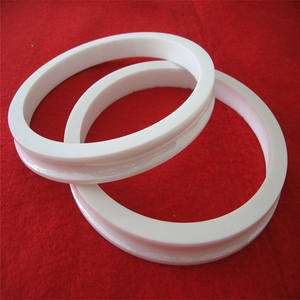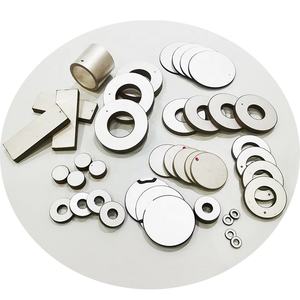Discover Premium Ceramic Products | Durability & Elegance United | Advanced Ceramics
PRODUCT PARAMETERS
Description
Introduction to Alumina Ceramics
Alumina ceramics are known for their high hardness, wear resistance, corrosion resistance, good electrical insulation and high temperature stability. According to the different alumina content, it can be divided into different grades, such as 95 porcelain, 99 porcelain, etc., among which 99 porcelain refers to ceramic materials with an alumina content of 99%. As the alumina content increases, its mechanical strength and electrical insulation properties will also increase accordingly.
Characteristics of Alumina Ceramics
High Hardness: Alumina ceramics have extremely high hardness, which makes it very wear-resistant and suitable for manufacturing abrasive tools and parts that require wear resistance.
Wear resistance: Due to its high hardness, alumina ceramics show excellent wear resistance and are suitable for manufacturing parts for long-term use.
Corrosion resistance: Alumina ceramics have good resistance to most acids and alkalis, making them widely used in the chemical industry.
Good electrical insulation: As an excellent electrical insulating material, alumina ceramics are widely used in electronic and electrical products.
High temperature stability: Ability to withstand extremely high temperatures without significant physical or chemical changes, which makes it an ideal choice for applications in high temperature environments.
Biocompatibility: In the medical field, certain grades of alumina ceramics are used to make medical devices such as artificial joints due to their good biocompatibility.

(High Insulation Thermal 1600C 1700C 1800C Alumina Ceramic Fiber Board for Klin)
Specifications of High Insulation Thermal 1600C 1700C 1800C Alumina Ceramic Fiber Board for Klin
High Insulation Thermal Alumina Porcelain Fiber Board is designed for kilns running at extreme temperatures. It deals with temperatures approximately 1600 ° C, 1700 ° C, or 1800 ° C depending upon the quality. The board is made from high-purity alumina and silica fibers. These materials ensure security under extreme warmth. The item is light-weight but resilient. It withstands thermal shock successfully. This makes it appropriate for fast heating or cooling down cycles.
The board has low thermal conductivity. Warm transfer is decreased. Power efficiency enhances in kilns. Gas costs lower in time. The product’s thickness ranges in between 260 kg/m ³ and 320 kg/m four. Greater density versions provide far better mechanical stamina. They endure physical tension during installment or use.
Compressive toughness is a vital feature. The board preserves structure under heavy tons. It stands up to contortion at high temperatures. This protects against fractures or spaces in kiln cellular linings. Custom-made dimensions are offered. Typical thicknesses are 25 mm, 50 mm, and 100 mm. Requirement measurements match most industrial kiln styles. Reducing or shaping the board is simple. Tools like saws or drills function without harming the product.
Applications consist of furnace cellular linings, kiln doors, and backup insulation. It acts as a barrier against warmth loss. Industrial procedures like metalworking, glassmaking, or ceramics benefit. The board is chemically inert. It does not respond with a lot of gases or liquified products. Dirt generation is reduced during handling. This improves work environment safety.
Installation is simple. The board can be secured with ceramic bolts or adhesives. Upkeep needs are very little. Long life span lowers substitute regularity. Storage needs a dry setting. Dampness exposure ought to be avoided before usage.
The product satisfies market standards for high-temperature insulation. Testing verifies thermal performance and safety. Customized orders consist of details qualifications if required. Technical assistance is available for sizing or application concerns.
Energy cost savings are significant compared to traditional refractory materials. Heat retention cuts operational prices. Temperature level uniformity in kilns improves product top quality. Downtime for fixings reduces. The board is environmentally friendly. It contains no asbestos or unsafe binders. Disposal adheres to common hazardous waste guidelines.
Performance remains secure over time. No shrinkage occurs at optimal temperatures. Thermal insulation residential properties remain efficient throughout the product’s lifespan.

(High Insulation Thermal 1600C 1700C 1800C Alumina Ceramic Fiber Board for Klin)
Applications of High Insulation Thermal 1600C 1700C 1800C Alumina Ceramic Fiber Board for Klin
High Insulation Thermal Alumina Ceramic Fiber Boards for Kilns give efficient warmth management in extreme-temperature atmospheres. These boards handle temperature levels up to 1600 ° C, 1700 ° C, and 1800 ° C. They are excellent for commercial kilns calling for dependable insulation. The product incorporates alumina and ceramic fibers. This mix ensures reduced thermal conductivity and high warm resistance.
The boards minimize power loss by trapping warmth inside kilns. This enhances energy effectiveness and decreases operating costs. They maintain constant temperature levels throughout procedures like ceramic shooting or steel treatment. Their structure withstands thermal shock. This protects against fractures or damage from rapid temperature level changes.
Industries like porcelains, metallurgy, and glass manufacturing make use of these boards. They line kiln wall surfaces, roofings, and doors. Their light-weight design streamlines installation compared to conventional bricks. They likewise use up much less room. This permits even more adaptable kiln styles.
The boards withstand extended exposure to high heat without deteriorating. They have low heat storage space. This indicates kilns warm up and cool down much faster. Production cycles reduce. Gas usage declines.
Personalized shapes and sizes are available. This ensures an accurate fit for different kiln versions. The product is chemically stable. It does not react with most commercial gases or materials. This expands service life and lowers maintenance demands.
Standard refractory products commonly fracture under thermal anxiety. These ceramic fiber boards offer much better toughness. They stay undamaged also after repeated home heating cycles. This dependability lessens downtime.
Safety and security is a vital benefit. The boards offer superb insulation. Exterior surface areas remain cooler. This protects employees and devices close by. Fire threats reduce.
High Insulation Thermal Alumina Porcelain Fiber Boards are a practical upgrade for kiln systems. They balance performance, cost savings, and safety. Their adaptability matches varied industrial home heating applications.
Company Introduction
Advanced Ceramics founded on October 17, 2014, is a high-tech enterprise committed to the research and development, production, processing, sales and technical services of ceramic relative materials and products.. Since its establishment in 2014, the company has been committed to providing customers with the best products and services, and has become a leader in the industry through continuous technological innovation and strict quality management.
Our products includes but not limited to Silicon carbide ceramic products, Boron Carbide Ceramic Products, Boron Nitride Ceramic Products, Silicon Carbide Ceramic Products, Silicon Nitride Ceramic Products, Zirconium Dioxide Ceramic Products, Quartz Products, etc. Please feel free to contact us.(nanotrun@yahoo.com)

Payment Methods
T/T, Western Union, Paypal, Credit Card etc.
Shipment Methods
By air, by sea, by express, as customers request.

5 FAQs of High Insulation Thermal 1600C 1700C 1800C Alumina Ceramic Fiber Board for Klin
What is the maximum temperature the High Insulation Thermal Alumina Ceramic Fiber Board can handle? The boards come in three grades. The 1600°C grade works for temperatures up to 1600°C. The 1700°C grade handles 1700°C. The 1800°C grade resists up to 1800°C. Each grade keeps stable performance under these limits. They suit kilns needing strong heat resistance.
Where is this ceramic fiber board commonly used? These boards fit industrial kilns, furnaces, and high-heat equipment. They line walls, roofs, or floors in heating systems. They insulate parts exposed to extreme temperatures. Factories in metal, glass, or ceramics often use them. They reduce energy loss and improve efficiency.
How do you install the alumina ceramic fiber board? Cut the board with saws or blades. Fit it into the kiln structure. Use ceramic anchors or high-temperature adhesives to secure it. Ensure joints are tight to prevent heat leaks. Avoid mechanical stress during installation. The boards stay lightweight and easy to handle.
Is the ceramic fiber board safe for high-temperature environments? The boards are non-flammable and chemically stable. They produce no harmful gases under heat. Handle them with gloves and masks during installation. Airborne fibers may irritate skin or lungs. Once installed, the boards pose no safety risks. They meet industrial safety standards.
What affects the lifespan of these insulation boards? Prolonged exposure to maximum temperatures may reduce lifespan. Thermal cycling or mechanical damage can cause wear. Proper installation and avoiding direct flame contact help longevity. Check boards regularly for cracks or erosion. Replace damaged sections promptly. Maintenance ensures consistent performance over time.

(High Insulation Thermal 1600C 1700C 1800C Alumina Ceramic Fiber Board for Klin)
REQUEST A QUOTE
RELATED PRODUCTS
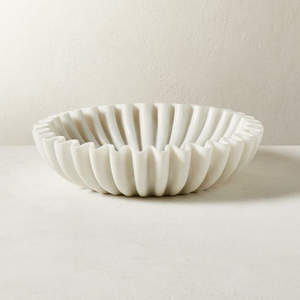
Alumina Silicate Fibre Plate Ceramic Fiber Board for Pizza Oven Furnace Insulation Refractory Aluminium Silicate
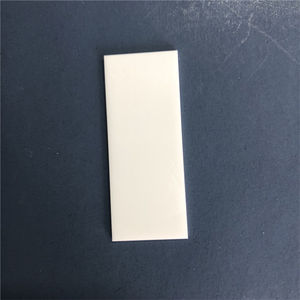
High Purity 99% Alumina Ceramic Sleeves Industrial Ceramic Al2O3 Structural Tubes/Parts
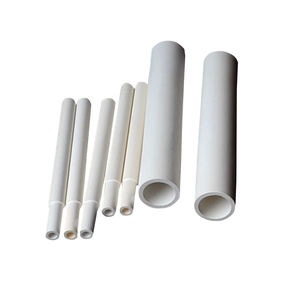
Custom Large-Diameter Alumina Ceramic Corundum Tube Alumina Ceramic Crucible High Durability and Thermal Conductivity
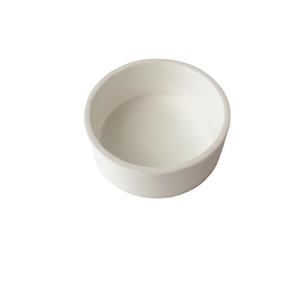
Industrial Porous Alumina Honeycomb Ceramic Multi-color Customization
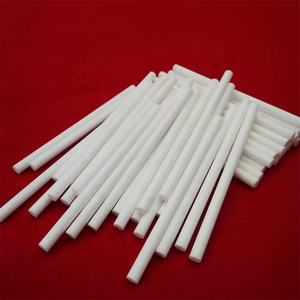
Hot ing Customized 95 99 Alumina Ceramic Insulator Hardness Auto Chemical
